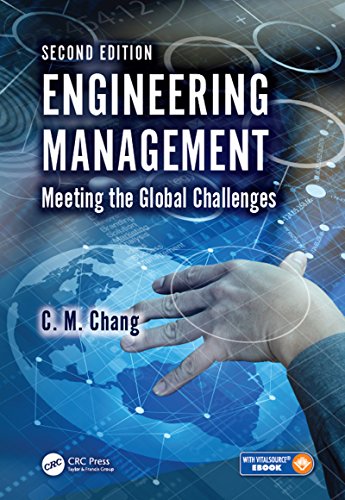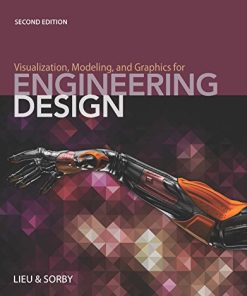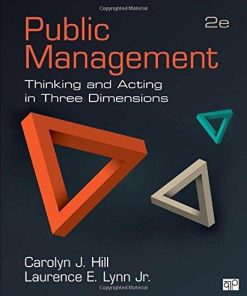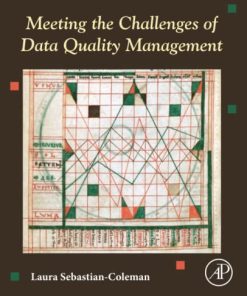Engineering Management: Meeting the Global Challenges, Second Edition 2nd Edition – Ebook PDF Version
$50.00 Original price was: $50.00.$25.00Current price is: $25.00.
Engineering Management: Meeting the Global Challenges, Second Edition 2nd Edition – Ebook PDF Version – Digital Instant Dowload.
Engineering Management: Meeting the Global Challenges, Second Edition 2nd Edition – Ebook PDF Version – Digital Instant Dowload.

Product details:
- ISBN-10 : 1498730078
- ISBN-13 : 978-1498730075
- Author: C. M. Chang
Engineering Management: Meeting the Global Challenges prepares engineers to fulfill their managerial responsibilities, acquire useful business perspectives, and take on the much-needed leadership roles to meet the challenges in the new millennium. Value addition, customer focus, and business perspectives are emphasized throughout. Also underlined are discussions of leadership attributes, steps to acquire these attributes, the areas engineering managers are expected to add value, the web-based tools which can be aggressively applied to develop and sustain competitive advantages, the opportunities offered by market expansion into global regions, and the preparations required for engineering managers to become global leaders.
The book is organized into three major sections: functions of engineering management, business fundamentals for engineering managers, and engineering management in the new millennium. This second edition refocuses on the new strategy for science, technology, engineering, and math (STEM) professionals and managers to meet the global challenges through the creation of strategic differentiation and operational excellence. Major revisions include a new chapter on creativity and innovation, a new chapter on operational excellence, and combination of the chapters on financial accounting and financial management.
The design strategy for this second edition strives for achieving the T-shaped competencies, with both broad-based perspectives and in-depth analytical skills. Such a background is viewed as essential for STEM professionals and managers to exert a strong leadership role in the dynamic and challenging marketplace. The material in this book will surely help engineering managers play key leadership roles in their organizations by optimally applying their combined strengths in engineering and management.
Table of contents:
Introduction to Management Challenges for Engineers
Introduction
Definitions
Employment Trend in Industries
STEM Professionals as Effective Technical Contributors
Management and Leadership
Becoming Effective Managers in the New Millennium
Conclusions
References
THE FUNCTIONS OF ENGINEERING MANAGEMENT
Planning
Introduction
Types of Planning
Who Should Do the Planning?
Inexact Nature of Strategic Planning
Planning Roles of Engineering Managers
Tools for Planning
Planning Activities
Some Specific Advice on Planning
Conclusion
References
Organizing
Introduction
Definitions
Activities of Organizing
Organizing One’s Own Workplace for Productivity
Developing Organizational Structure
Enhancing Corporate Performance by Organizing: Examples
Concurrent Engineering Teams
Delegating
Establishing Working Relationships
Informal Organizations
Conclusion
References
Leading
Introduction
Styles of Leadership
Leading Activities
Deciding
Communicating
Motivating
Selecting Engineering Employees
Developing People
Special Topics on Leading
Conclusion
Appendix A: Factors Affecting One’s Influence on Others
Appendix B: Motivation of Mission-Critical People
References
Controlling
Introduction
Setting Performance Standards
Benchmarking
Measuring Performance
Evaluating Performance
Correcting Performance
Means of Control
General Comments
Control of Management Time
Control of Personnel
Control of Business Relationships
Control of Projects
Control of Quality
Control of Knowledge
Conclusion
References
BUSINESS ESSENTIALS FOR ENGINEERING MANAGERS
Cost Accounting for Engineering Managers
Introduction
Product or Service Costing
Application of ABC in Industry
Risk Analysis and Cost Estimation under Uncertainty
Miscellaneous Topics
Conclusions
Appendix A: Basic Terms in Cost Accounting
Appendix B: Cost Analysis
Appendix C: Time Value of Money and Compound Interest Equations
Appendix D: Depreciation Accounting
Appendix E: Inventory Accounting
Appendix F: Derivation of Single Payment Compound Amount Factor
Appendix G: Derivation of Uniform Series Compound Amount Factor
Appendix H: Derivation of Annual Cost Computation Equations
Appendix I: Conversion of a Probability Density Function to Its Cumulative Distribution Function
You may also like…
Uncategorized
Stage Lighting Second Edition – Ebook PDF Version: The Fundamentals 2nd Edition – Ebook PDF Version
Engineering
Visualization, Modeling, and Graphics for Engineering Design 2nd Edition – Ebook PDF Version
Uncategorized
Operating System Design: The Xinu Approach, Second Edition u2013 Ebook PDF Version 2nd
Uncategorized
Human Factors Engineering and Ergonomics: A Systems Approach, Second Edition – Ebook PDF Version
Uncategorized
Uncategorized
Public Management: Thinking and Acting in Three Dimensions Second Edition – Ebook PDF Version
Uncategorized
Public Personnel Management: Current Concerns, Future Challenges 6th Edition – Ebook PDF Version
Computers - Organization and Data Processing
Meeting the Challenges of Data Quality Management Laura Sebastian-Coleman












